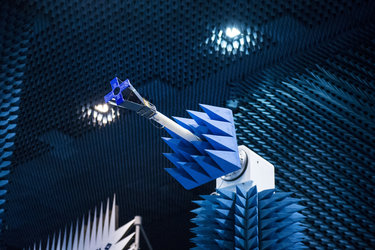Compliant Mechanism Based on Additive Manufacturing - Activity 2
Compliant guiding elements are used in industrial and space applications, where high reliability, accuracy and demanding requirements against contamination are needed. The high complexity of compliant mechanisms (CoMes) currently require extremely sophisticated and expensive manufacturing methods.
The use of Additive Manufacturing could however allow for the development of space compliant mechanisms with a higher design freedom, leading to the novel manufacturing of complex geometries complaint for new space applications. Shorter manufacturing times and monolithic designs, would also lead to shorter lead and assembly times.
Telecommunication, Navigation and Earth Observation mission are the most likely targets and beneficiaries of additive manufacture mechanisms. Many satellites are constantly under construction, with well-established environmental conditions, and would benefit from the large-scale production of well-known mechanisms (i.e., antenna pointing, thruster orientation and refocusing) and calibration assemblies.

Funded by GSTP, a Compliant Rotation Reduction Mechanism (CRRM) was manufactured from titanium using powder based selective laser melting technology and additive manufacture techniques throughout. CRRM was found to be advantageous in providing:
- Promising fatigue behaviour
- Compact design with easy implementation of actuators, launch locks and additional sensors
- Gear ratio is easily adaptable to special demands
- A monolithic design only manufacturable by additive manufacture
A rigorous test campaign, including early sample testing raised the technology readiness level to 5 (testing in a relevant environment with an elegant-breadboard model) and demonstrated the possibility of using additive based manufacturing processes to produce flexible compliant items.
CRRM passed the test programme without any deterioration in performance or visible damage.
The activity was performed by Beyond Gravity GmbH (Germany), previously called Ruag Space, in cooperation with Fraunhofer-Institut für Werkstoff- und Strahltechnik (German) and OHB System AG (Germany).





